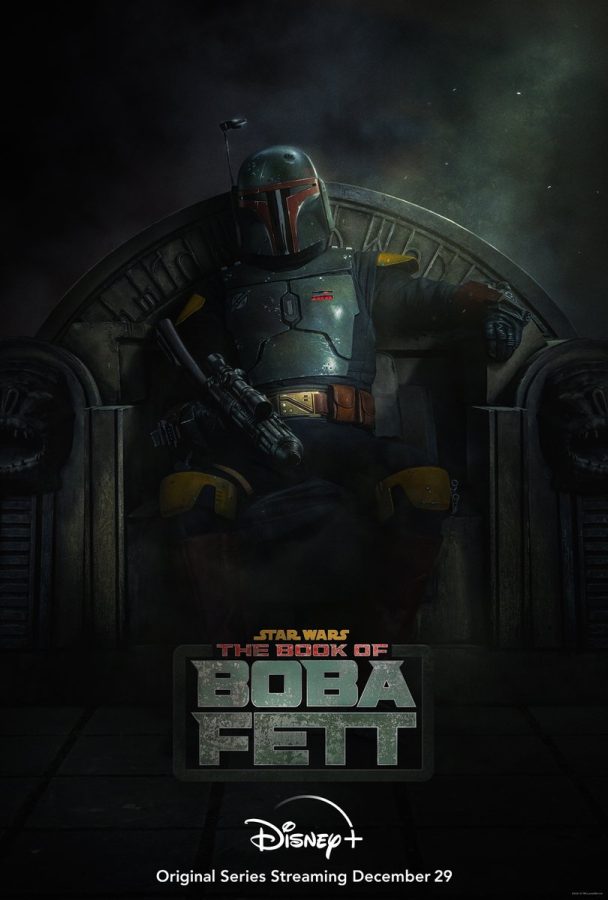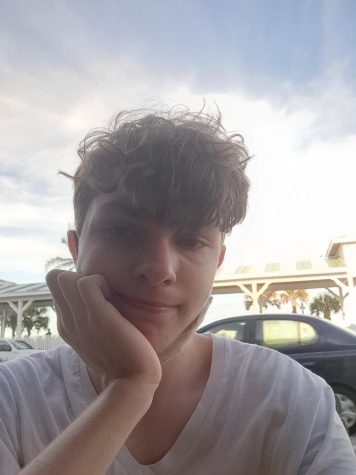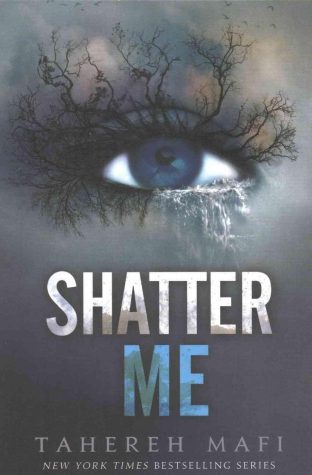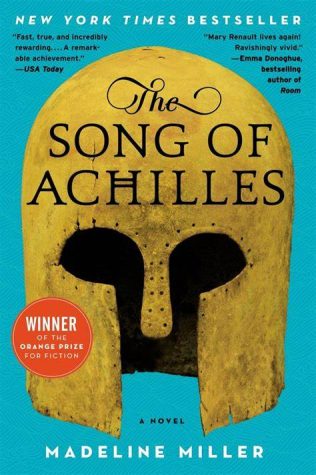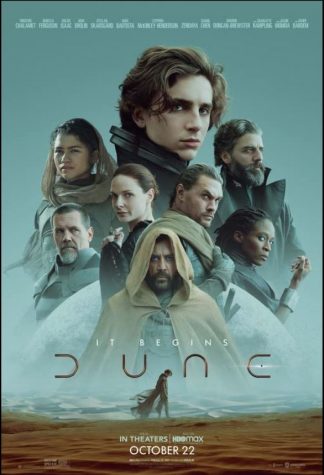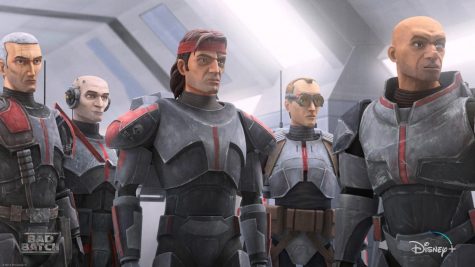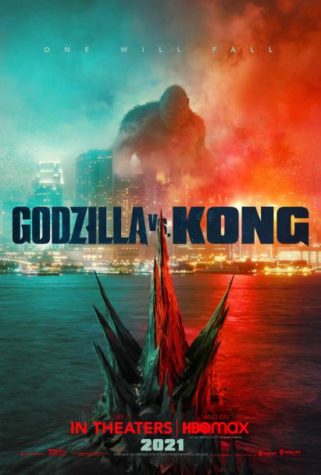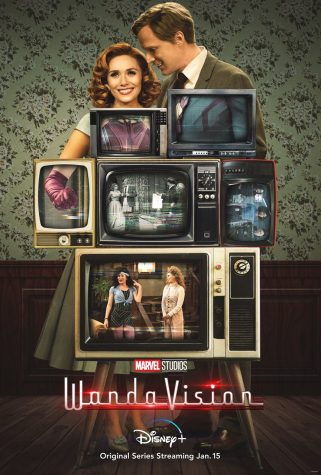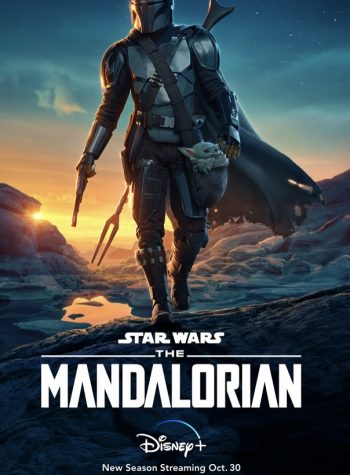The Book of Boba Fett isn’t Even About Boba
Courtesy of The Book of Boba Fett Twitter page (https://mobile.twitter.com/bobafett/status/1443229086709547009?cxt=HHwWgoCsrabNsIcoAAAA)
March 24, 2022
After the season 2 finale of The Mandalorian, Star Wars fans has been clamoring for the next Disney+ show from the galaxy far, far away. Over a year later, Lucasfilm has finally released The Book of Boba Fett. The seven-part series, follows the titular ex-bounty hunter, Boba Fett (Temuera Morrison) and Fennec Shand (Ming-Na Wen) as they attempt to stake their claim as the leading Daimios of Tatooine. Produced by Jon Favreau, Dave Filoni, and Robert Rodriguez, this series is set directly after the post-credits scene in The Mandalorian, with Boba Fett facing many challenges to reforge himself after his untimely experience in Return of the Jedi. While it is a very ambitious direction to take Fett, the show is unfortunately plagued with slow pacing and bizarre character choices that will make you wonder whether The Book of Boba Fett is even about, well, Boba Fett.
To start on a more positive note, this show does add more nuance to Boba’s character. In previous films, Fett was mostly just a mysterious and quiet grunt that got a cheap death and a bizarre origin story as a clone of his father, Jango. In this show, Boba finally gets more character growth. This provides strong thematic elements about community and reinvention that clicked with me. Through a series of flashbacks to his time after escaping certain death, Boba is accepted by the native Tusken Raiders of Tatooine, which is where we as an audience see what kind of man Boba Fett is becoming without his armor. Through the Tuskens, he gains a new purpose in his life – protecting a community that also protects him, and ruling people through respect, not fear. This experience reflects his ambition to become the new Daimio of Tatooine, wanting to make the town of Mos Espa more prosperous than it was under Jabba the Hutt, the former Daimio who had ruled through fear. In this way, Boba is rising above his old life as a bounty hunter (what his father trained him to become from birth) and is becoming a new, better person. This theme of reinvention is a very enticing theme for a Star Wars show to tackle, and Boba Fett is an excellent choice for this journey.
Unfortunately, this journey is far from a solo one, which may be the greatest detriment to this show. While it is titled The Book of Boba Fett, Boba Fett is surprisingly absent for almost a third of the show. Without going into spoilers, several major characters from The Mandalorian return in this series. These characters do not show up until the fifth and sixth episodes, but their appearances derail the entire pacing of the show. Across these episodes, Boba only shows up for one scene, with his only action being a single nod to another character. While the inclusion of these characters does connect to the themes of reinvention and community established, I feel that their appearances could have been handled better. If these characters were introduced earlier on in the series, their scenes could have been spread out more evenly across the seven episodes, allowing Boba to have more screen time in each episode. Alas, Boba is often treated as a side character in his own story, which is more unfortunate considering the scenes that he does have. While Temuera Morrison is putting a lot into his performance as Boba, the script does not always seem to fit his portrayal. Some of the writing in this show is often very ridiculous, making a lot of the sentences that come out of Boba’s mouth sound very humorous, which makes it hard for the audience to take him seriously. This show has generated a lot of memes surrounding his lines, and anyone who has heard of “like a bantha” should know what I am talking about.
This unbalanced pacing makes many side plots and characters in The Book of Boba Fett worse as a result, with a lot of storylines being pushed aside for flashbacks explaining how Boba got to where he is. While some of these flashbacks are important to Boba’s character arc, many feel longer than they need to be. The supporting cast also gets their development shafted. Even though she was billed as the second lead of the show, Fennec Shand has very little growth, mostly serving as a way to deliver exposition to the audience. As a top mercenary, it would have been interesting to see how she would want to reinvent herself, but she never even mentions wanting to live a better life. Furthermore, a group of cyberpunk street kids is enlisted by Boba Fett to serve as his primary muscle, but their story never really gets developed either, causing me to question their initial inclusion in the show. However, some side characters are cool to see. Black Krrsantan is a unique bounty hunter to add to the mix, especially for fans of the Star Wars comics from where he first appeared. And lastly, there was another bounty hunter that arrived at the end of the sixth episode whose inclusion and portrayal in the show was rock solid, working as a perfect foil for Boba Fett’s new life. I won’t give away his name, but if you are a fan of Star Wars: The Clone Wars, then you are in for a treat.
The show’s finale is a great example of the missed potential that the show could have had. While it delivered with some exciting action and a fitting conclusion to Boba Fett’s arc, it also feels underserved in some parts. For example, Boba had an arc set up in episode three about how he wanted to ride rancor, a creature that is often labeled by other people as monstrous but is not inherently bad. Boba was told that it would be difficult, but he insisted that he wanted to try anyway. The rancor serves as a reflection of Boba Fett himself – someone who wants to break the mold of how others view them. However, we never get to see them share any scenes until the finale, where Boba is confidently riding it without any issues. While it is a cool spectacle to the eye, the moment feels cheap and unearned. Again, the finale was mostly fine, but the show felt like it needed a few more episodes to fully flesh out all of its characters and subplots properly.
Before my final verdict, I want to quickly discuss some other aspects of the show. Like The Mandalorian, the special and practical effects on the characters and environments look incredible, perfectly bringing to life all the different alien species that exist in this world. However, the set pieces often look bland when compared to those of The Mandalorian. Every episode of that show featured a different planet that had a distinct look, whereas The Book of Boba Fett mostly takes place on the sand-ridden planet of Tatooine. While it doesn’t look bad per se, Tatooine is a planet that has shown up in a lot of Star Wars media in the past, so a little more variety would have been appreciated. There are some cool action scenes in this show, though most of them involve characters other than Boba Fett. Fett does have one or two cool moments though, such as his frightful attack on a speeding train and his breathtaking duel in the finale. Lastly, the music in this show reinforces its individuality, with Ludwig Göransson’s score feeling completely different than any score in other Star Wars media.
Overall, The Book of Boba Fett might be one of the most confounding shows that I have ever watched. I am all for the thematic elements that Favreau, Filoni, Rodriguez, and Morrison are all trying to tell, but I think that these ideas could have been executed in a much better way. This is a shame, as the core of the show is compelling, but the lack of focus on Boba himself makes his journey possibly the least interesting part of the series. It pains me to say this, but The Book of Boba Fett might be the first miss that Star Wars has had on Disney+, though it is required viewing if you want to understand The Mandalorian season 3. I give The Book of Boba Fett a 5/10.
